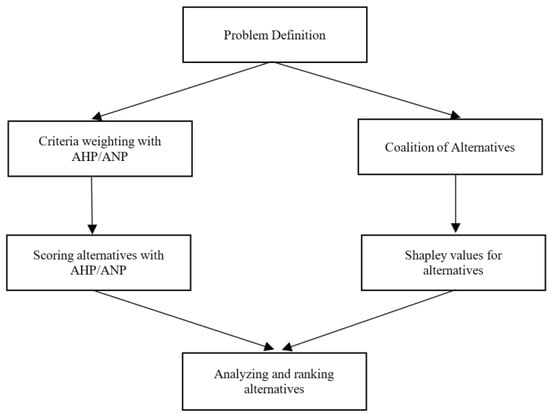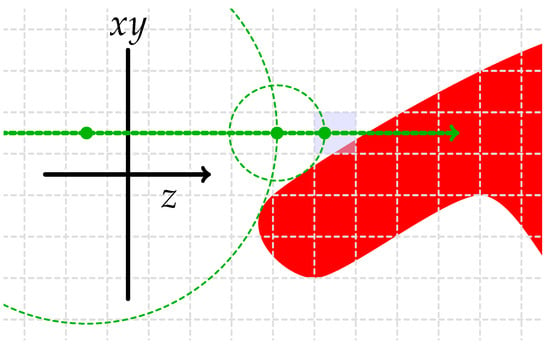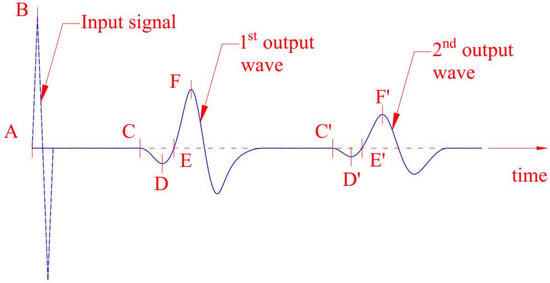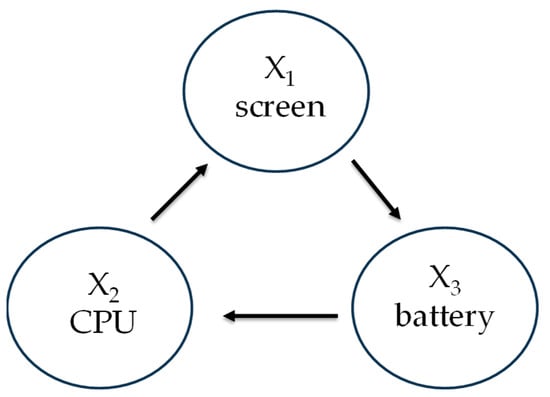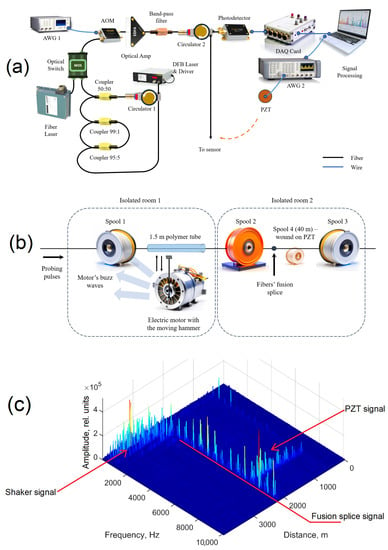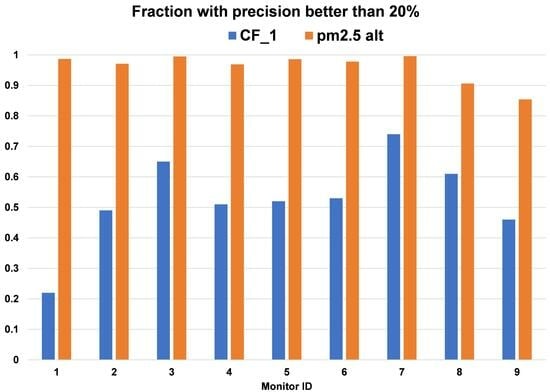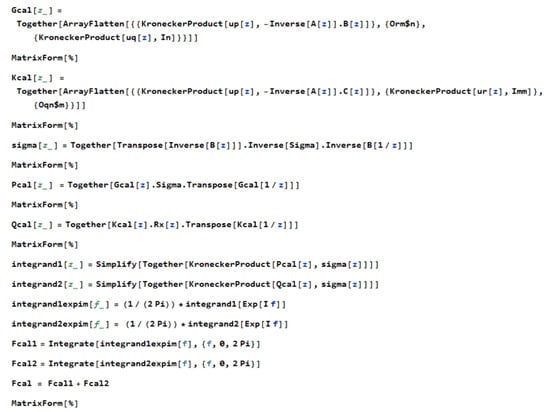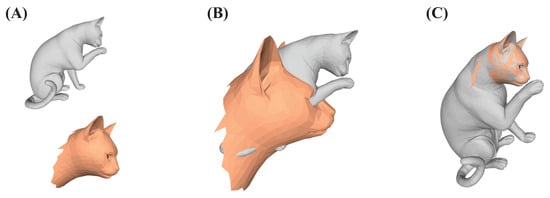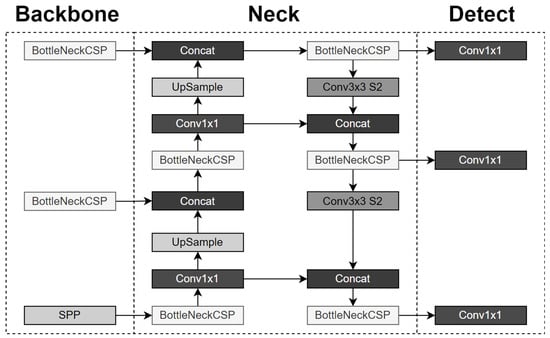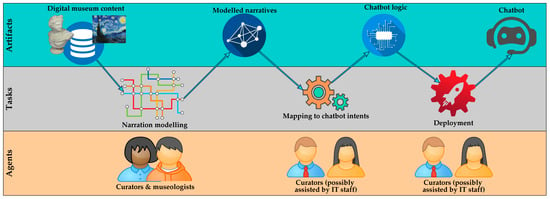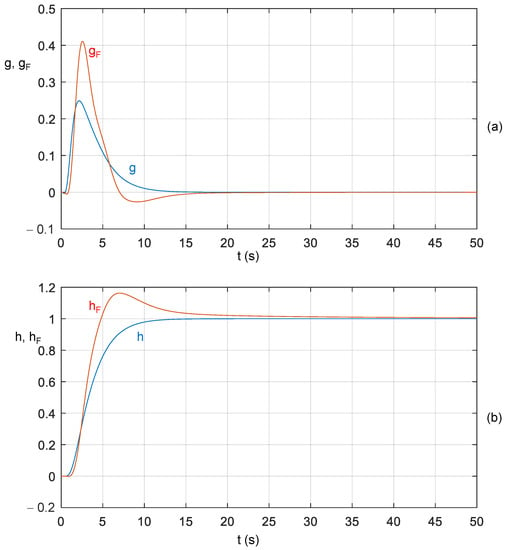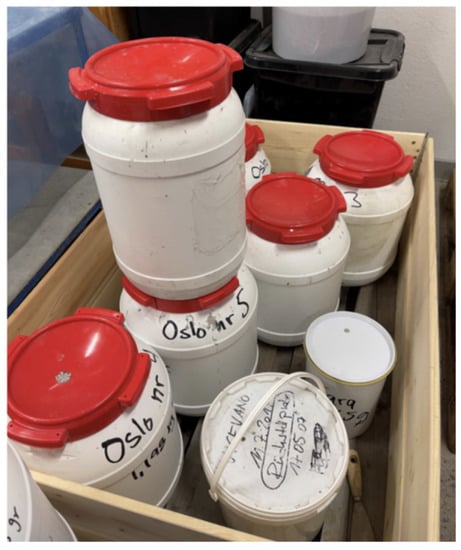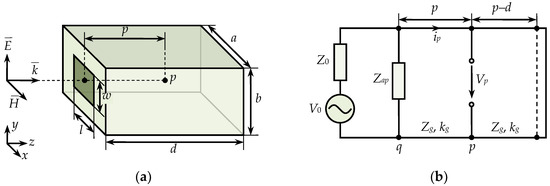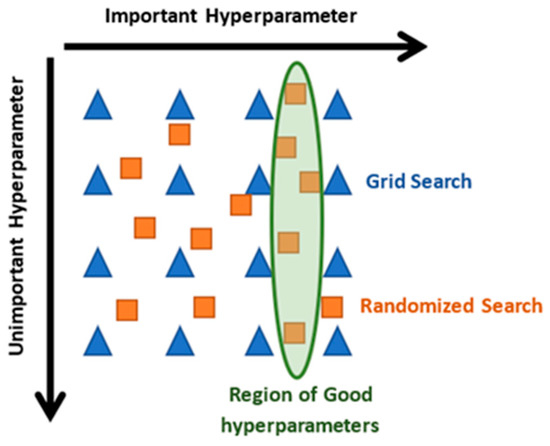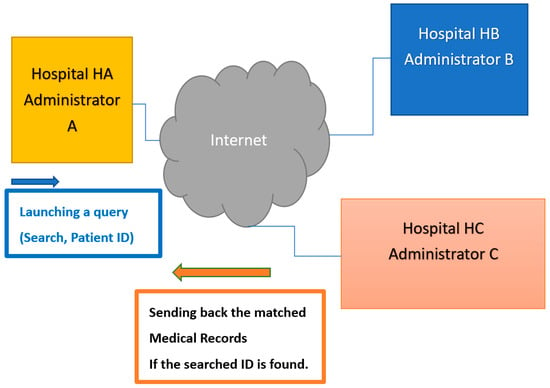Feature Papers in Algorithms for Multidisciplinary Applications
Share This Topical Collection
Editor
 Dr. Francesc Pozo
Dr. Francesc Pozo
 Dr. Francesc Pozo
Dr. Francesc Pozo
E-Mail
Website
Collection Editor
Department of Mathematics, Escola d’Enginyeria de Barcelona Est (EEBE), Universitat Politècnica de Catalunya (UPC), Campus Diagonal-Besòs (CDB), Eduard Maristany, 16, 08019 Barcelona, Spain
Interests: structural health monitoring; condition monitoring; piezoelectric transducers; PZT; data science; wind turbines
Special Issues, Collections and Topics in MDPI journals
Topical Collection Information
Dear Colleagues,
Algorithms have been widely used in various fields, including computer science, engineering, medicine, biology, and social sciences. With the development of interdisciplinary research, the need for algorithms that can be applied to multiple fields has become more urgent. Therefore, we are pleased to announce a Topical Collection on “Algorithms for Multidisciplinary Applications”.
This Topical Collection aims to gather the latest advances in algorithms that can be applied in different fields. We welcome contributions that propose new algorithms, analyze the performance of existing algorithms, or apply algorithms to solve real-world problems in multidisciplinary fields. Topics of interest include, but are not limited to, the following:
- Machine learning algorithms for multidisciplinary applications;
- Optimization algorithms for interdisciplinary problems;
- Graph algorithms in social sciences and biology;
- Data structures and algorithms for healthcare applications;
- Algorithms for image and signal processing in engineering and physics;
- Algorithms for natural language processing and information retrieval in humanities and social sciences.
Dr. Francesc Pozo
Guest Editor
Manuscript Submission Information
Manuscripts should be submitted online at www.mdpi.com by registering and logging in to this website. Once you are registered, click here to go to the submission form. Manuscripts can be submitted until the deadline. All submissions that pass pre-check are peer-reviewed. Accepted papers will be published continuously in the journal (as soon as accepted) and will be listed together on the collection website. Research articles, review articles as well as short communications are invited. For planned papers, a title and short abstract (about 100 words) can be sent to the Editorial Office for announcement on this website.
Submitted manuscripts should not have been published previously, nor be under consideration for publication elsewhere (except conference proceedings papers). All manuscripts are thoroughly refereed through a single-blind peer-review process. A guide for authors and other relevant information for submission of manuscripts is available on the Instructions for Authors page. Algorithms is an international peer-reviewed open access monthly journal published by MDPI.
Please visit the Instructions for Authors page before submitting a manuscript.
The Article Processing Charge (APC) for publication in this open access journal is 1600 CHF (Swiss Francs).
Submitted papers should be well formatted and use good English. Authors may use MDPI's
English editing service prior to publication or during author revisions.
Keywords
- machine learning
- optimization
- graph algorithms
- data structures
- signal processing
- image processing
- natural language processing
- information retrieval
- healthcare applications
- interdisciplinary research
Published Papers (17 papers)
Open AccessArticle
Resource Allocation of Cooperative Alternatives Using the Analytic Hierarchy Process and Analytic Network Process with Shapley Values
by
Jih-Jeng Huang and Chin-Yi Chen
Viewed by 464
Abstract
Cooperative alternatives need complex multi-criteria decision-making (MCDM) consideration, especially in resource allocation, where the alternatives exhibit interdependent relationships. Traditional MCDM methods like the Analytic Hierarchy Process (AHP) and Analytic Network Process (ANP) often overlook the synergistic potential of cooperative alternatives. This study introduces
[...] Read more.
Cooperative alternatives need complex multi-criteria decision-making (MCDM) consideration, especially in resource allocation, where the alternatives exhibit interdependent relationships. Traditional MCDM methods like the Analytic Hierarchy Process (AHP) and Analytic Network Process (ANP) often overlook the synergistic potential of cooperative alternatives. This study introduces a novel method integrating AHP/ANP with Shapley values, specifically designed to address this gap by evaluating alternatives on individual merits and their contributions within coalitions. Our methodology begins with defining problem structures and applying AHP/ANP to determine the criteria weights and alternatives’ scores. Subsequently, we compute Shapley values based on coalition values, synthesizing these findings to inform resource allocation decisions more equitably. A numerical example of budget allocation illustrates the method’s efficacy, revealing significant insights into resource distribution when cooperative dynamics are considered. Our results demonstrate the proposed method’s superiority in capturing the nuanced interplay between criteria and alternatives, leading to more informed urban planning decisions. This approach marks a significant advancement in MCDM, offering a comprehensive framework that incorporates both the analytical rigor of AHP/ANP and the equitable considerations of cooperative game theory through Shapley values.
Full article
►▼
Show Figures
Open AccessArticle
Theoretical and Empirical Analysis of a Fast Algorithm for Extracting Polygons from Signed Distance Bounds
by
Nenad Markuš and Mirko Sužnjević
Viewed by 501
Abstract
Recently, there has been renewed interest in signed distance bound representations due to their unique properties for 3D shape modelling. This is especially the case for deep learning-based bounds. However, it is beneficial to work with polygons in most computer graphics applications. Thus,
[...] Read more.
Recently, there has been renewed interest in signed distance bound representations due to their unique properties for 3D shape modelling. This is especially the case for deep learning-based bounds. However, it is beneficial to work with polygons in most computer graphics applications. Thus, in this paper, we introduce and investigate an asymptotically fast method for transforming signed distance bounds into polygon meshes. This is achieved by combining the principles of sphere tracing (or ray marching) with traditional polygonization techniques, such as marching cubes. We provide theoretical and experimental evidence that this approach is of the
computational complexity for a polygonization grid with
cells. The algorithm is tested on both a set of primitive shapes and signed distance bounds generated from point clouds by machine learning (and represented as neural networks). Given its speed, implementation simplicity, and portability, we argue that it could prove useful during the modelling stage as well as in shape compression for storage.
Full article
►▼
Show Figures
Open AccessArticle
A Computational Platform for Automatic Signal Processing for Bender Element Sensors
by
Ionuţ Dragoş Moldovan, Abdalla Almukashfi and António Gomes Correia
Viewed by 662
Abstract
The small strain shear modulus is an important characteristic of geomaterials that can be measured experimentally using piezoelectric sensors (bender elements). However, most conventional signal interpretation techniques are based on the visual observation of the output signal and therefore inherently subjective. Objective techniques
[...] Read more.
The small strain shear modulus is an important characteristic of geomaterials that can be measured experimentally using piezoelectric sensors (bender elements). However, most conventional signal interpretation techniques are based on the visual observation of the output signal and therefore inherently subjective. Objective techniques also exist, like the cross-correlation of the input and output signals, but they lack physical insight, as they rely on the (incorrect) assumption that input and output signals are similar. This paper presents GeoHyTE, the first objective and physically consistent toolbox for the automatic processing of the output signal of bender element sensors. GeoHyTE updates a finite element model of the experiment, iteratively searching for the small strain shear modulus that maximises the correlation between the experimental and numerical output signals. The method is objective, as the results do not depend on the experience of the user, and physically consistent, as the wave propagation process is modelled in full and signals of the same nature (output) are correlated. Moreover, GeoHyTE is nearly insensitive to grossly erroneous input by the user, both in terms of the starting point of the iterative maximisation process and refinement of the finite element model. The results obtained with GeoHyTE are validated against benchmark measurements reported in the literature and experimental data obtained by the authors. A detailed statistical analysis of the results obtained with GeoHyTE and conventional interpretation techniques is also presented.
Full article
►▼
Show Figures
Open AccessArticle
Personalized Advertising in E-Commerce: Using Clickstream Data to Target High-Value Customers
by
Virgilijus Sakalauskas and Dalia Kriksciuniene
Viewed by 1794
Abstract
The growing popularity of e-commerce has prompted researchers to take a greater interest in deeper understanding online shopping behavior, consumer interest patterns, and the effectiveness of advertising campaigns. This paper presents a fresh approach for targeting high-value e-shop clients by utilizing clickstream data.
[...] Read more.
The growing popularity of e-commerce has prompted researchers to take a greater interest in deeper understanding online shopping behavior, consumer interest patterns, and the effectiveness of advertising campaigns. This paper presents a fresh approach for targeting high-value e-shop clients by utilizing clickstream data. We propose the new algorithm to measure customer engagement and recognizing high-value customers. Clickstream data is employed in the algorithm to compute a Customer Merit (CM) index that measures the customer’s level of engagement and anticipates their purchase intent. The CM index is evaluated dynamically by the algorithm, examining the customer’s activity level, efficiency in selecting items, and time spent in browsing. It combines tracking customers browsing and purchasing behaviors with other relevant factors: time spent on the website and frequency of visits to e-shops. This strategy proves highly beneficial for e-commerce enterprises, enabling them to pinpoint potential buyers and design targeted advertising campaigns exclusively for high-value customers of e-shops. It allows not only boosts e-shop sales but also minimizes advertising expenses effectively. The proposed method was tested on actual clickstream data from two e-commerce websites and showed that the personalized advertising campaign outperformed the non-personalized campaign in terms of click-through and conversion rate. In general, the findings suggest, that personalized advertising scenarios can be a useful tool for boosting e-commerce sales and reduce advertising cost. By utilizing clickstream data and adopting a targeted approach, e-commerce businesses can attract and retain high-value customers, leading to higher revenue and profitability.
Full article
►▼
Show Figures
Open AccessArticle
Search on an NK Landscape with Swarm Intelligence: Limitations and Future Research Opportunities
by
Ren-Raw Chen, Cameron D. Miller and Puay Khoon Toh
Viewed by 1084
Abstract
Swarm intelligence has promising applications for firm search and decision-choice problems and is particularly well suited for examining how other firms influence the focal firm’s search. To evaluate search performance, researchers examining firm search through simulation models typically build a performance landscape. The
[...] Read more.
Swarm intelligence has promising applications for firm search and decision-choice problems and is particularly well suited for examining how other firms influence the focal firm’s search. To evaluate search performance, researchers examining firm search through simulation models typically build a performance landscape. The NK model is the leading tool used for this purpose in the management science literature. We assess the usefulness of the NK landscape for simulated swarm search. We find that the strength of the swarm model for examining firm search and decision-choice problems—the ability to model the influence of other firms on the focal firm—is limited to the NK landscape. Researchers will need alternative ways to create a performance landscape in order to use our full swarm model in simulations. We also identify multiple opportunities—endogenous landscapes, agent-specific landscapes, incomplete information, and costly movements—that future researchers can include in landscape development to gain the maximum insights from swarm-based firm search simulations.
Full article
►▼
Show Figures
Open AccessArticle
Activation Function Dynamic Averaging as a Technique for Nonlinear 2D Data Denoising in Distributed Acoustic Sensors
by
Artem T. Turov, Fedor L. Barkov, Yuri A. Konstantinov, Dmitry A. Korobko, Cesar A. Lopez-Mercado and Andrei A. Fotiadi
Cited by 4 | Viewed by 1452
Abstract
This work studies the application of low-cost noise reduction algorithms for the data processing of distributed acoustic sensors (DAS). It presents an improvement of the previously described methodology using the activation function of neurons, which enhances the speed of data processing and the
[...] Read more.
This work studies the application of low-cost noise reduction algorithms for the data processing of distributed acoustic sensors (DAS). It presents an improvement of the previously described methodology using the activation function of neurons, which enhances the speed of data processing and the quality of event identification, as well as reducing spatial distortions. The possibility of using a cheaper radiation source in DAS setups is demonstrated. Optimal algorithms’ combinations are proposed for different types of the events recorded. The criterion for evaluating the effectiveness of algorithm performance was an increase in the signal-to-noise ratio (SNR). The finest effect achieved with a combination of algorithms provided an increase in SNR of 10.8 dB. The obtained results can significantly expand the application scope of DAS.
Full article
►▼
Show Figures
Open AccessArticle
From Data to Human-Readable Requirements: Advancing Requirements Elicitation through Language-Transformer-Enhanced Opportunity Mining
by
Pascal Harth, Orlando Jähde, Sophia Schneider, Nils Horn and Rüdiger Buchkremer
Viewed by 1283
Abstract
In this research, we present an algorithm that leverages language-transformer technologies to automate the generation of product requirements, utilizing E-Shop consumer reviews as a data source. Our methodology combines classical natural language processing techniques with diverse functions derived from transformer concepts, including keyword
[...] Read more.
In this research, we present an algorithm that leverages language-transformer technologies to automate the generation of product requirements, utilizing E-Shop consumer reviews as a data source. Our methodology combines classical natural language processing techniques with diverse functions derived from transformer concepts, including keyword and summary generation. To effectively capture the most critical requirements, we employ the opportunity matrix as a robust mechanism for identifying and prioritizing urgent needs. Utilizing transformer technologies, mainly through the implementation of summarization and sentiment analysis, we can extract fundamental requirements from consumer assessments. As a practical demonstration, we apply our technology to analyze the ratings of the Amazon echo dot, showcasing our algorithm’s superiority over conventional approaches by extracting human-readable problem descriptions to identify critical user needs. The results of our study exemplify the potential of transformer-enhanced opportunity mining in advancing the requirements-elicitation processes. Our approach streamlines product improvement by extracting human-readable problem descriptions from E-Shop consumer reviews, augmenting operational efficiency, and facilitating decision-making. These findings underscore the transformative impact of incorporating transformer technologies within requirements engineering, paving the way for more effective and scalable algorithms to elicit and address user needs.
Full article
►▼
Show Figures
Open AccessArticle
Testing a New “Decrypted” Algorithm for Plantower Sensors Measuring PM2.5: Comparison with an Alternative Algorithm
by
Lance Wallace
Viewed by 924
Abstract
Recently, a hypothesis providing a detailed equation for the Plantower CF_1 algorithm for PM
2.5 has been published. The hypothesis was originally validated using eight independent Plantower sensors in four PurpleAir PA-II monitors providing PM
2.5 estimates from a single site in 2020.
[...] Read more.
Recently, a hypothesis providing a detailed equation for the Plantower CF_1 algorithm for PM
2.5 has been published. The hypothesis was originally validated using eight independent Plantower sensors in four PurpleAir PA-II monitors providing PM
2.5 estimates from a single site in 2020. If true, the hypothesis makes important predictions regarding PM
2.5 measurements using CF_1. Therefore, we test the hypothesis using 18 Plantower sensors from four datasets from two sites in later years (2021–2023). The four general models from these datasets agreed to within 10% with the original model. A competing algorithm known as “pm2.5 alt” has been published and is freely available on the PurpleAir API site. The accuracy, precision, and limit of detection for the two algorithms are compared. The CF_1 algorithm overestimates PM
2.5 by about 60–70% compared to two calibrated PurpleAir monitors using the pm2.5 alt algorithm. A requirement that the two sensors in a single monitor agree to within 20% was met by 85–99% of the data using the pm2.5 alt algorithm, but by only 22–74% of the data using the CF_1 algorithm. The limit of detection (LOD) of the CF_1 algorithm was about 10 times the LOD of the pm2.5 alt algorithm, resulting in 71% of the CF_1 data falling below the LOD, compared to 1 % for the pm2.5 alt algorithm.
Full article
►▼
Show Figures
Open AccessArticle
An Algorithm for the Fisher Information Matrix of a VARMAX Process
by
André Klein and Guy Mélard
Viewed by 723
Abstract
In this paper, an algorithm for Mathematica is proposed for the computation of the asymptotic Fisher information matrix for a multivariate time series, more precisely for a controlled vector autoregressive moving average stationary process, or VARMAX process. Meanwhile, we present briefly several algorithms
[...] Read more.
In this paper, an algorithm for Mathematica is proposed for the computation of the asymptotic Fisher information matrix for a multivariate time series, more precisely for a controlled vector autoregressive moving average stationary process, or VARMAX process. Meanwhile, we present briefly several algorithms published in the literature and discuss the sufficient condition of invertibility of that matrix based on the eigenvalues of the process operators. The results are illustrated by numerical computations.
Full article
►▼
Show Figures
Open AccessArticle
A Physicist’s View on Partial 3D Shape Matching
by
Patrice Koehl and Henri Orland
Cited by 1 | Viewed by 1492
Abstract
A new algorithm is presented to compute nonrigid, possibly partial comparisons of shapes defined by unstructured triangulations of their surfaces. The algorithm takes as input a pair of surfaces with each surface given by a distinct and unrelated triangulation. Its goal is to
[...] Read more.
A new algorithm is presented to compute nonrigid, possibly partial comparisons of shapes defined by unstructured triangulations of their surfaces. The algorithm takes as input a pair of surfaces with each surface given by a distinct and unrelated triangulation. Its goal is to define a possibly partial correspondence between the vertices of the two triangulations, with a cost associated with this correspondence that can serve as a measure of the similarity of the two shapes. To find this correspondence, the vertices in each triangulation are characterized by a signature vector of features. We tested both the LD-SIFT signatures, based on the concept of spin images, and the wave kernel signatures obtained by solving the Shrödinger equation on the triangulation. A cost matrix
C is constructed such that
is the norm of the difference of the signature vectors of vertices
k and
l. The correspondence between the triangulations is then computed as the transport plan that solves the optimal transport or optimal partial transport problem between their sets of vertices. We use a statistical physics approach to solve these problems. The presentation of the proposed algorithm is complemented with examples that illustrate its effectiveness and manageable computing cost.
Full article
►▼
Show Figures
Open AccessArticle
Deep Learning for Detecting Verticillium Fungus in Olive Trees: Using YOLO in UAV Imagery
by
Marios Mamalis, Evangelos Kalampokis, Ilias Kalfas and Konstantinos Tarabanis
Cited by 6 | Viewed by 1920
Abstract
The verticillium fungus has become a widespread threat to olive fields around the world in recent years. The accurate and early detection of the disease at scale could support solving the problem. In this paper, we use the YOLO version 5 model to
[...] Read more.
The verticillium fungus has become a widespread threat to olive fields around the world in recent years. The accurate and early detection of the disease at scale could support solving the problem. In this paper, we use the YOLO version 5 model to detect verticillium fungus in olive trees using aerial RGB imagery captured by unmanned aerial vehicles. The aim of our paper is to compare different architectures of the model and evaluate their performance on this task. The architectures are evaluated at two different input sizes each through the most widely used metrics for object detection and classification tasks (precision, recall, mAP@0.5 and mAP@0.5:0.95). Our results show that the YOLOv5 algorithm is able to deliver good results in detecting olive trees and predicting their status, with the different architectures having different strengths and weaknesses.
Full article
►▼
Show Figures
Open AccessArticle
Chatbots for Cultural Venues: A Topic-Based Approach
by
Vasilis Bouras, Dimitris Spiliotopoulos, Dionisis Margaris, Costas Vassilakis, Konstantinos Kotis, Angeliki Antoniou, George Lepouras, Manolis Wallace and Vassilis Poulopoulos
Viewed by 1965
Abstract
Digital assistants—such as chatbots—facilitate the interaction between persons and machines and are increasingly used in web pages of enterprises and organizations. This paper presents a methodology for the creation of chatbots that offer access to museum information. The paper introduces an information model
[...] Read more.
Digital assistants—such as chatbots—facilitate the interaction between persons and machines and are increasingly used in web pages of enterprises and organizations. This paper presents a methodology for the creation of chatbots that offer access to museum information. The paper introduces an information model that is offered through the chatbot, which subsequently maps the museum’s modeled information to structures of DialogFlow, Google’s chatbot engine. Means for automating the chatbot generation process are also presented. The evaluation of the methodology is illustrated through the application of a real case, wherein we developed a chatbot for the Archaeological Museum of Tripolis, Greece.
Full article
►▼
Show Figures
Open AccessArticle
Basis Functions for a Transient Analysis of Linear Commensurate Fractional-Order Systems
by
Dalibor Biolek, Viera Biolková, Zdeněk Kolka and Zdeněk Biolek
Cited by 1 | Viewed by 1064
Abstract
In this paper, the possibilities of expressing the natural response of a linear commensurate fractional-order system (FOS) as a linear combination of basis functions are analyzed. For all possible types of
sα-domain poles, the corresponding basis functions are found, the kernel
[...] Read more.
In this paper, the possibilities of expressing the natural response of a linear commensurate fractional-order system (FOS) as a linear combination of basis functions are analyzed. For all possible types of
sα-domain poles, the corresponding basis functions are found, the kernel of which is the two-parameter Mittag–Leffler function
Eα,β,
β =
α. It is pointed out that there are mutually unambiguous correspondences between the basis functions of FOS and the known basis functions of the integer-order system (IOS) for
α = 1. This correspondence can be used to algorithmically find analytical formulas for the impulse responses of FOS when the formulas for the characteristics of IOS are known. It is shown that all basis functions of FOS can be generated with Podlubny‘s function of type
εk (t,
c;
α,
α), where
c and
k are the corresponding pole and its multiplicity, respectively.
Full article
►▼
Show Figures
Open AccessArticle
Optimized Workflow Framework in Construction Projects to Control the Environmental Properties of Soil
by
Per Lindh and Polina Lemenkova
Cited by 1 | Viewed by 1271
Abstract
To optimize the workflow of civil engineering construction in a harbour, this paper developed a framework of the contaminant leaching assessment carried out on the stabilized/solidified dredged soil material. The specimens included the sampled sediments collected from the in situ fieldwork in Arendal
[...] Read more.
To optimize the workflow of civil engineering construction in a harbour, this paper developed a framework of the contaminant leaching assessment carried out on the stabilized/solidified dredged soil material. The specimens included the sampled sediments collected from the in situ fieldwork in Arendal and Kongshavn. The background levels of the concentration of pollutants were evaluated to assess the cumulative surface leaching of substances from samples over two months. The contamination of soil was assessed using a structured workflow scheme on the following toxic substances, heavy metals—As, Pb, Cd, Cr, Hg, Ni, and Zn; organic compounds—PAH-16 and PCB; and organotin compounds—TBT. The numerical computation and data analysis were applied to the results of geochemical testing creating computerised solutions to soil quality evaluation in civil engineering. Data modelling enabled the estimation of leaching of the contaminants in one year. The estimated leaching of As is 0.9153 mg/m
2, for Ni—2.8178 mg/m
2, for total PAH-16 as 0.0507 mg/m
2, and for TBT—0.00061 mg/m
2 per year. The performance of the sediments was examined with regard to permeability through a series of the controlled experiments. The environmental engineering tests were implemented in the Swedish Geotechnical Institute (SGI) in a triplicate mode over 64 days. The results were compared for several sites and showed that the amount of As is slightly higher in Kongshavn than for Arendal, while the content of Cd, Cr, and Ni is lower. For TBT, the levels are significantly lower than for those at Arendal. The algorithm of permeability tests evaluated the safety of foundation soil for construction of embankments and structures. The optimized assessment methods were applied for monitoring coastal areas through the evaluated permeability of soil and estimated leaching rates of heavy metals, PHB, PACs, and TBT in selected test sites in harbours of southern Norway.
Full article
►▼
Show Figures
Open AccessArticle
Generalized Algorithm Based on Equivalent Circuits for Evaluating Shielding Effectiveness of Electronic Equipment Enclosures
by
Anton A. Ivanov, Aleksey A. Kvasnikov, Alexander V. Demakov, Maxim E. Komnatnov, Sergei P. Kuksenko and Talgat R. Gazizov
Viewed by 1410
Abstract
The article proposes a generalized algorithm for evaluating the shielding effectiveness (SE) of electronic equipment enclosures. The algorithm is based on a number of analytical models that use equivalent circuits to obtain SE values. The article begins with a brief review and interpretation
[...] Read more.
The article proposes a generalized algorithm for evaluating the shielding effectiveness (SE) of electronic equipment enclosures. The algorithm is based on a number of analytical models that use equivalent circuits to obtain SE values. The article begins with a brief review and interpretation of the mathematical formulation used in the algorithm. Then, we describe the proposed algorithm using flowcharts, and we perform its validation. The validation results show that the proposed algorithm has acceptable accuracy and gives SE values comparable to numerical methods or measurements, with much less time costs. The last part of the article presents the software developed to evaluate SE based on analytical models.
Full article
►▼
Show Figures
Open AccessArticle
Random forest Algorithm for the Classification of Spectral Data of Astronomical Objects
by
José-Luis Solorio-Ramírez, Raúl Jiménez-Cruz, Yenny Villuendas-Rey and Cornelio Yáñez-Márquez
Viewed by 1868
Abstract
Over time, human beings have built increasingly large astronomical observatories to increase the number of discoveries related to celestial objects. However, the amount of collected elements far exceeds the human capacity to analyze findings without help. For this reason, researchers must now turn
[...] Read more.
Over time, human beings have built increasingly large astronomical observatories to increase the number of discoveries related to celestial objects. However, the amount of collected elements far exceeds the human capacity to analyze findings without help. For this reason, researchers must now turn to machine learning to analyze such data, identifying and classifying transient objects or events within extensive observations of the firmament. Algorithms from the family of random forests (an ensemble of decision trees) have become a powerful tool that can be used to classify astronomical events and objects. This work aims to illustrate the versatility of machine learning algorithms, such as decision trees, to facilitate the identification and classification of celestial bodies by manipulating hyperparameters and studying the attributes of celestial body datasets. By applying a random forest algorithm to a well-known dataset that includes three types of celestial bodies, its effectiveness was compared against some supervised classifiers of the most important approaches (Bayes, nearest neighbors, support vector machines, and neural networks). The results show that random forests are a good alternative for data analysis and classification in astronomical observations.
Full article
►▼
Show Figures
Open AccessArticle
A Privacy-Preserving Symptoms Retrieval System with the Aid of Homomorphic Encryption and Private Set Intersection Schemes
by
Yi-Wei Wang and Ja-Ling Wu
Cited by 2 | Viewed by 1434
Abstract
This work presents an efficient and effective system allowing hospitals to share patients’ private information while ensuring that each hospital database’s medical records will not be leaked; moreover, the privacy of patients who access the data will also be protected. We assume that
[...] Read more.
This work presents an efficient and effective system allowing hospitals to share patients’ private information while ensuring that each hospital database’s medical records will not be leaked; moreover, the privacy of patients who access the data will also be protected. We assume that the thread model of the hospital’s security is semi-honest (i.e., curious but honest), and each hospital hired a trusted medical records department administrator to manage patients’ private information from other hospitals. With the help of Homomorphic Encryption- and Private Set Intersection -related algorithms, our proposed system protects patient privacy, allows physicians to obtain patient information across hospitals, and prevents threats such as troublesome insider attacks and man-in-the-middle attacks.
Full article
►▼
Show Figures





